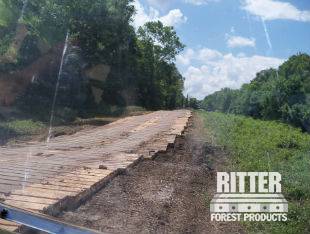Humans, animals and other living things all need to rest at some point. After a long day’s work, we’re sure you can agree that there’s nothing better than getting a good night’s sleep. Though we might see our loved ones or pets catch some shut eye for the night, have you ever seen a tree sleep? Did you ever think that trees would need sleep? We didn’t either, until scientists from Austria, Hungary and Finland recently discovered that trees just might, in fact, sleep at night, too.
According to a recent report in Frontiers in Plant Science, birch trees “sleep” at night, say researchers. During their study, the scientists discovered that the branches of two birch trees – one observed in Austria and the other in Finland – drooped as much as 10 centimeters (about 4 inches) overnight. How did they notice such a slight, yet incredible change? They pointed lasers at the birch trees, which bounced off the tree as sensors picked up small changes in the trees shape.
The researchers said it looked as if the trees were “taking a load off from a long day,” and specifically noted that the change occurred about two hours after sunset and lasted until around sunrise. Although these findings are preliminary and it’s only been conducted on one tree species, there are two hypothetical reasons as to why the trees branches droop at night.
The first theory is that the slouching behavior is due to a loss of internal water pressure, which is what helps trees keep their upstanding posture. Another possible reason is that trees are truly resting after using energy all day to raise their limbs up toward the sun.
 What Does this Mean for Logging and Other Industries?
What Does this Mean for Logging and Other Industries?
If this study leads to a better understanding of how trees use water at different times of the day, it could potentially aid the timber industry. Loggers often want trees to have a low water content when they are cut, and if trees were cut later in the evening or in the very early morning while still exhibiting this resting behavior, cut trees should have lower water content suggests one of the study authors, Eetu Puttonen, in an article from Vox. In other words, this study could help logging companies determine the best time to cut down trees, depending on their water content. It could result in the usage of quality wood.
Rubber manufacturers could also benefit at the other end of the spectrum. In that industry, where sap is needed to create rubber products, harvesting sap when water content is higher could help provide a greater yield. If this study’s findings hold, that could be a good sign for these operations, and help rubber manufacturers better time their tapping efforts to maximize production from trees.
This could even help companies performing construction through rural or woodland areas. By knowing that trees have dormant periods each evening, cutting of access roads or paths could be better timed to make efforts more effective. Additionally, planned construction near tree growth could also take into account the predicted changes in daily tree activity, in turn making trimming and cutting efforts more effective.
At Ritter Forest Products, we offer high-quality timber mats to help contractors and construction crews working in remote areas. With dragline mats, crane mats and other products to help keep stability on uneven or wet rural terrain, we can help make your project safer and more productive. To learn more, call us today at 800-426-9570 or request a quote for mats online now.

 What Does this Mean for Logging and Other Industries?
What Does this Mean for Logging and Other Industries?
